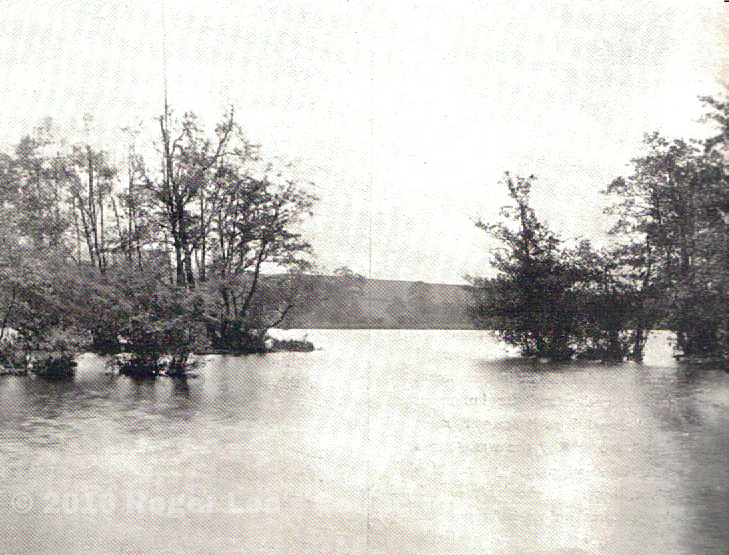For sixty years after the Norman Conquest Sutton Coldfield was a royal manor. During this time the King’s men improved the Manor House, giving it a curtain wall of stone and a chapel dedicated to St. Blaize, and adding the deer park which is now Sutton Park. The route to the Park from the Manor was down Wyndley Lane, and a causeway was built across the valley bottom forming a dam which created Wyndley Pool, which served as the manorial fish pond. In 1125 the Earl of Warwick became lord of the manor of Sutton, and Wyndley Pool fish were supplied to his kitchens.
Sutton’s Borough Charter of 1528 gave the Park to the new corporation, but the lands belonging to the manor house remained in private hands - the ruined manor house and land including Wyndley Pool belonged to Thomas Keene, who was married to Bishop Vesey’s niece. By the eighteenth century this all belonged to the Holts of Aston Hall, and passed by inheritance to the Somerville Estate in the nineteenth century.
In the summer of 1668 a freak storm broke out over Sutton Park and so much rain fell in the Longmoor Valley that flood waters broke through the dam of Wyndley Pool (Powells Pool and Longmoor Pool did not then exist). When the dam was eventually repaired by the Holts it was fitted with a sluice gate for a water mill. The mill flourished, and was known in the eighteenth century as Wyndley Forge.
A survey made in 1824 shows the mill and the pool in the ownership of the executors of Wriothesley Digby (a Holt heir), and occupied by Henry Downing. Henry was an ironmaster, living in the mill house, and two of his workmen lived in the neighbouring cottages. He later moved to Smethwick, and Wyndley Forge was converted into a sawmill. In the 1850s the mill was occupied by Thomas Hayward, a timber merchant whose business thrived as Sutton’s population grew; the nearby cottages now housed his workmen.
By 1880 the mill was abandoned and Wyndley Pool was a visitor attraction with rowing boats for hire and a café in the converted mill buildings. There is no trace of the mill and cottages now - children feed the ducks where once there was the deafening crash of trip-hammers in the forge or the shrill whine of the busy sawmill.
